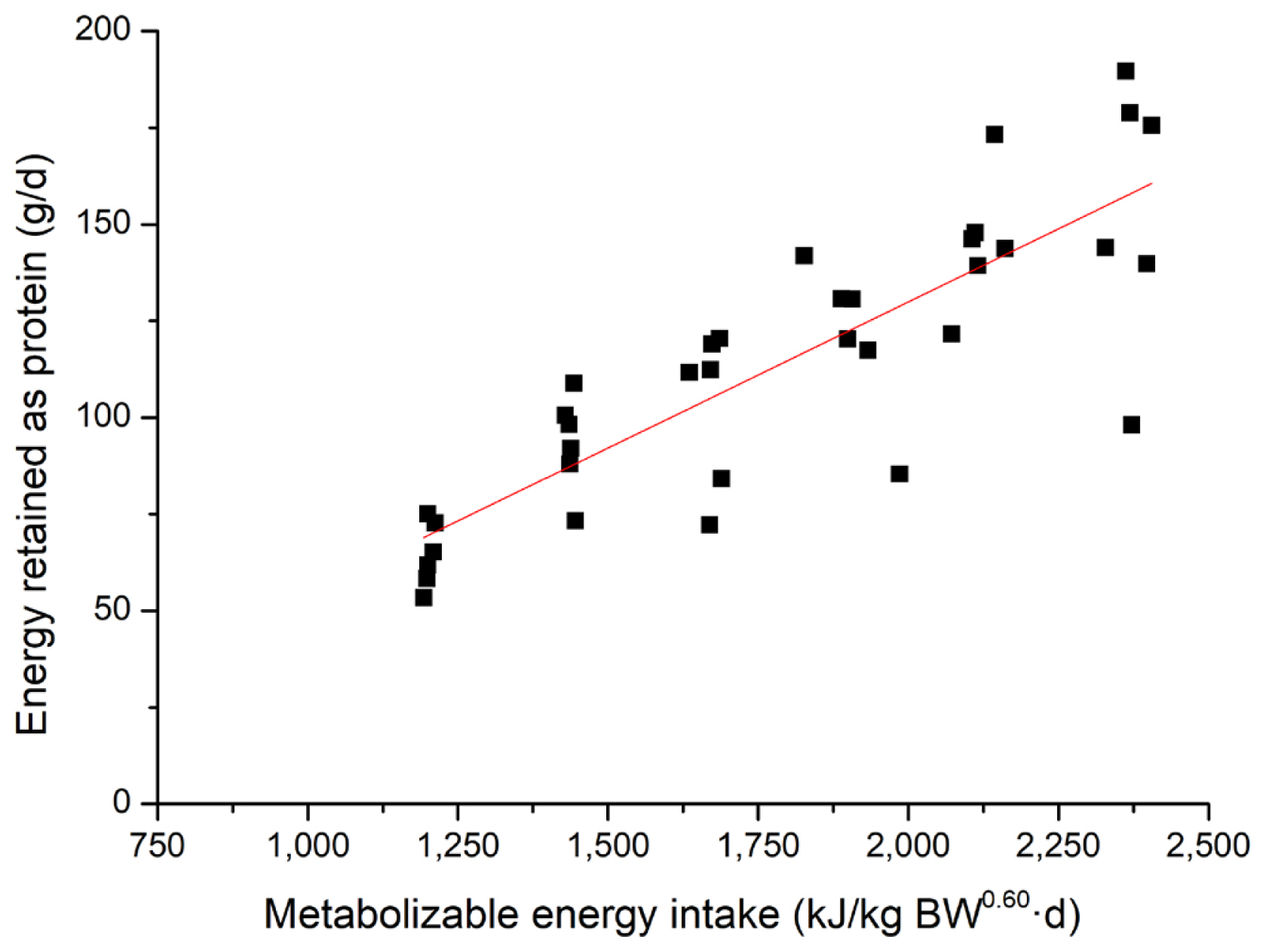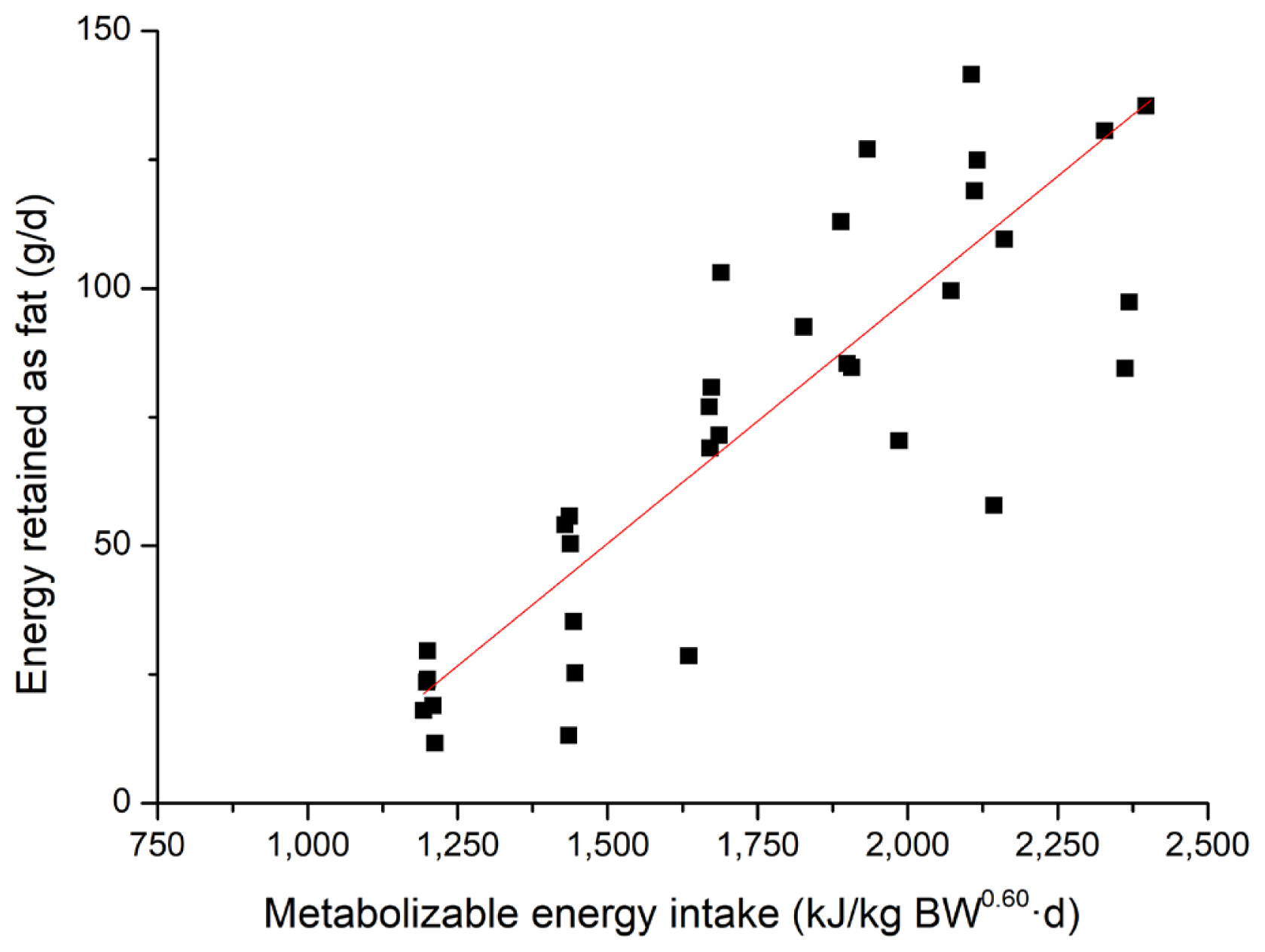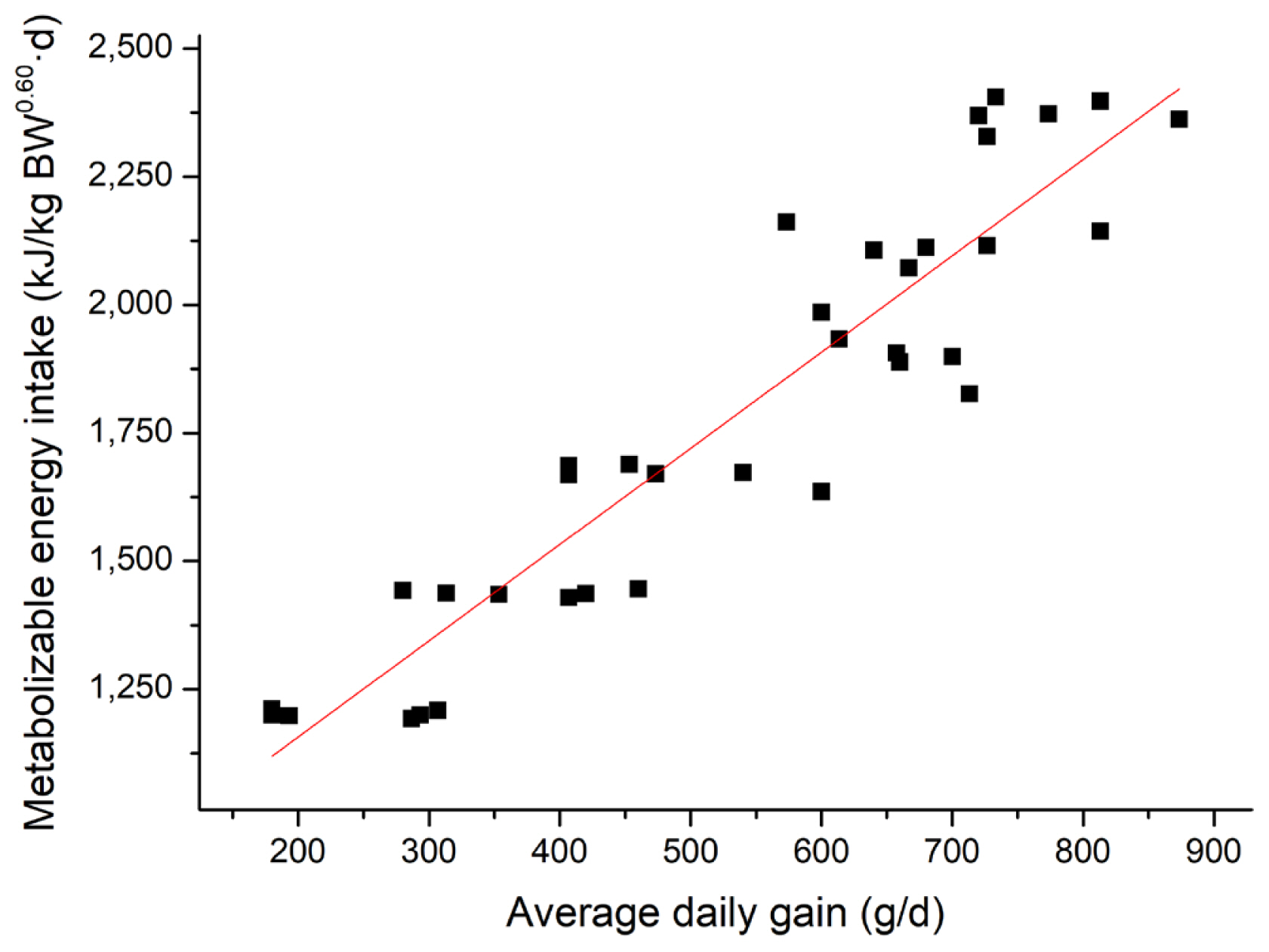1. Noblet J, Karege C, Dubois S, van Milgen J. Metabolic utilization of energy and maintenance requirements in growing pigs: effects of sex and genotype. J Anim Sci 1999; 77:1208–16.
https://doi.org/10.2527/1999.7751208x


2. ARC. The nutrient requirements of pigs. Slough, UK: Commonwealth Agricultural Bureaux; 1981.
5. Early RJ, Mahgoub O, Lu CD. Energy and protein utilization for maintenance and growth in Omani ram lambs in hot climates. I. Estimates of energy requirements and efficiency. J Agric Sci 2001; 136:451–9.
https://doi.org/10.1017/S0021859601008899

6. Yuliarty , Low S, Fisher J, Dryden GM. Energy requirements for maintenance and growth of entire male Bali cattle in East Timor. Anim Prod Sci 2014; 54:908–14.
https://doi.org/10.1071/AN13092

8. Liu DW, Jaworski NW, Zhang GF, Li Z, Li D, Wang F. Effect of experimental methodology on fasting heat production and the net energy content of corn and soybean meal fed to growing pigs. Arch Anim Nutr 2014; 68:281–95.
https://doi.org/10.1080/1745039X.2014.931016


9. Goerke M, Mosenthin R, Jezierny D, et al. Effect of feeding level on ileal and total tract digestibility of nutrients and energy from soybean meal-based diets for piglets. J Anim Physiol Anim Nutr 2014; 98:1154–65.
https://doi.org/10.1111/jpn.12174

10. Morel PCH, Lee TS, Moughan PJ. Effect of feeding level, live weight and genotype on the apparent faecal digestibility of energy and organic matter in the growing pig. Anim Feed Sci Technol 2006; 126:63–74.
https://doi.org/10.1016/j.anifeedsci.2005.06.006

11. van Milgen J, Bernier JF, Lecozler Y, Dubois S, Noblet J. Major determinants of fasting heat production and energetic cost of activity in growing pigs of different body weight and breed/castration combination. Br J Nutr 1998; 79:509–17.


12. Inoue H, Watanuki M, Myint HT, Ito T, Kuwayama H, Hidari H. Effects of fasting and refeeding on plasma concentrations of leptin, ghrelin, insulin, growth hormone and metabolites in swine. Anim Sci J 2005; 76:367–74.
https://doi.org/10.1111/j.1740-0929.2005.00277.x

16. AOAC International. Official methods of analysis of AOAC international. 18th edGaithersburg, MD, USA: AOAC International; 2007.
17. Thiex NJ, Anderson S, Gildemeister B. Crude fat, diethyl ether extraction, in feed, cereal grain, and forage (Randall/Soxtec/submersion method): collaborative study. J AOAC Int 2003; 86:888–98.


19. Adeola O. Digestion and balance techniques in pigs. Lewis AJ, Southern LL, editorsSwine nutrition. Washington, DC, USA: CRC Press; 2001. p. 903–16.

20. Brouwer E. Report of sub-committee on constants and factors. In : Proceedings of the 3rd EAAP Symposium on Energy Metabolism 1965; London, UK: Academic Press; 1965. p. 442–3.
22. Chwalibog A, Thorbek G. Quantitative partition of protein, carbohydrate and fat pools in growing pigs. Arch Anim Nutr 1995; 48:53–61.

23. Chwalibog A, Jakobsen K, Tauson AH, Thorbek G. Energy metabolism and nutrient oxidation in young pigs and rats during feeding, starvation and re-feeding. Comp Biochem Physiol A Mol Integr Physiol 2005; 140:299–307.
https://doi.org/10.1016/j.cbpb.2005.01.010


24. Peers DG, Taylor AG, Whittemore CT. The influence of feeding level and level of dietary inclusion on the digestibility of barley meal in the pig. Anim Feed Sci Technol 1977; 2:41–7.
https://doi.org/10.1016/0377-8401(77)90039-6

28. Le Goff G, Noblet J. Comparative total tract digestibility of dietary energy and nutrients in growing pigs and adult sows. J Anim Sci 2001; 79:2418–27.
https://doi.org/10.2527/2001.7992418x


33. Quiniou N, Dourmad JY, Noblet J. Effect of energy intake on the performance of different types of pig from 45 to 100 kg body weight. 1. Protein and lipid deposition. Anim Sci 1996; 63:277–88.
https://doi.org/10.1017/S1357729800014831

35. Chwalibog A, Jakobsen K, Henckel S, Thorbek G. Estimation of quantitative oxidation and fat retention from carbohydrate, protein and fat in growing pigs. J Anim Physiol Anim Nutr 1992; 68:123–35.
https://doi.org/10.1111/j.1439-0396.1992.tb00652.x

37. Black JL. Manipulation of body composition through nutrition. In : Proceedings of the Australian Society of Animal Production 2009; 2009 Feb; Sydney, Australia. Armidale NSW, Australia: ASAP; 1974. p. 211–8.
38. Wiesemüller W, Poppe S, Hackl W. Studies of the energy metabolism of pigs at a feeding level at live weight equilibrium. Arch Anim Nutr 1988; 38:603–17.
40. Campbell RG, Taverner MR, Curic DM. The influence of feeding level from 20 to 45 kg live weight on the performance and body composition of female and entire male pigs. Anim Sci 1983; 36:193–9.
https://doi.org/10.1017/S1357729800001247

43. Campbell RG, Taverner MR, Curic DM. Effects of sex and energy intake between 48 and 90 kg live weight on protein deposition in growing pigs. Anim Sci 1985; 40:497–503.
https://doi.org/10.1017/S0003356100040198

46. Whang KY, Easter RA. Blood urea nitrogen as an index of feed efficiency and lean growth potential in growing-finishing swine. Asian-Australas J Anim Sci 2000; 13:811–6.
https://doi.org/10.5713/ajas.2000.811


51. NRC. Nutrient requirements of swine. eleventh revised editonWashington, DC, USA: National Academy Press; 2012.











 PDF Links
PDF Links PubReader
PubReader ePub Link
ePub Link Full text via DOI
Full text via DOI Full text via PMC
Full text via PMC Download Citation
Download Citation Print
Print





